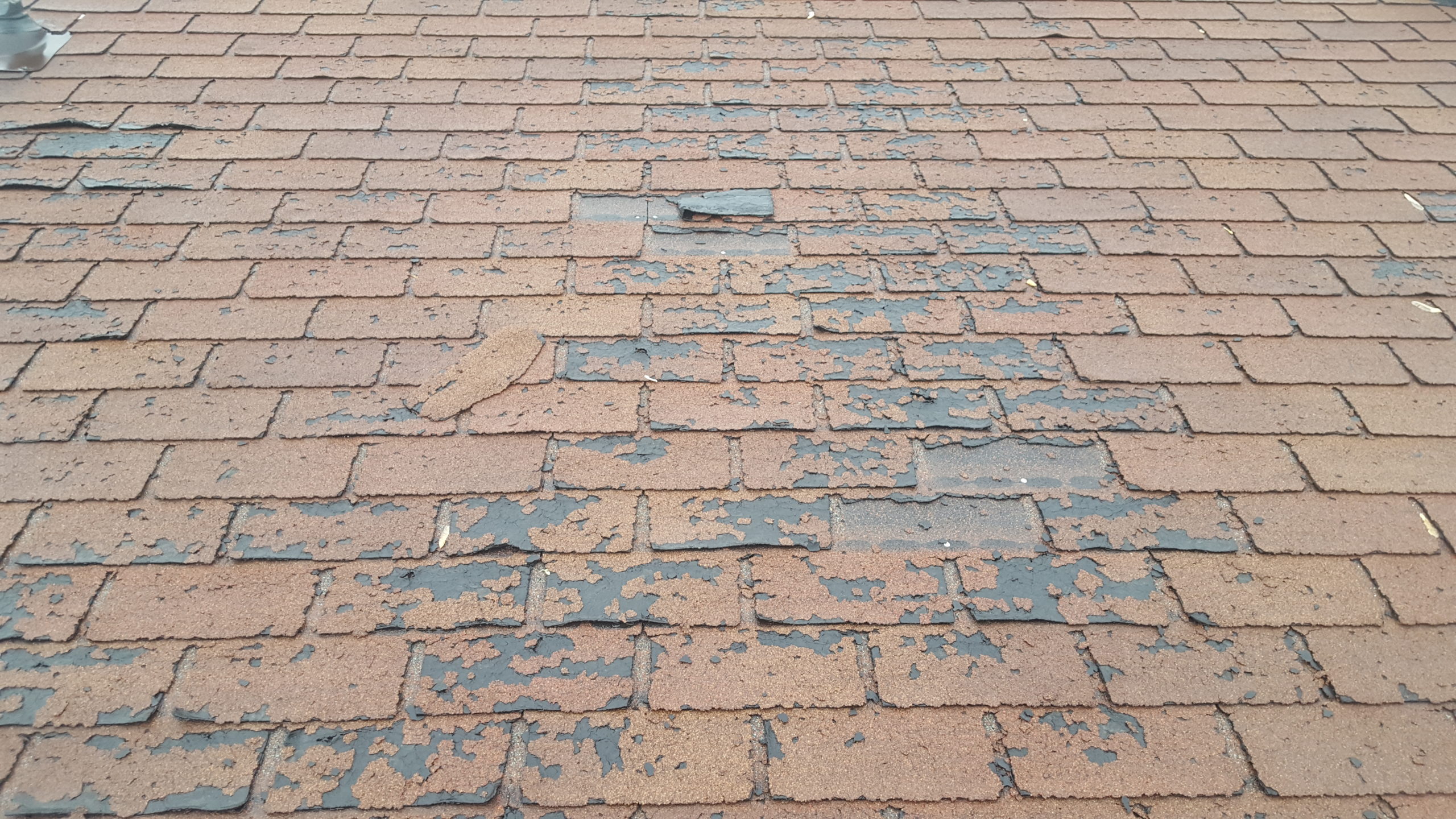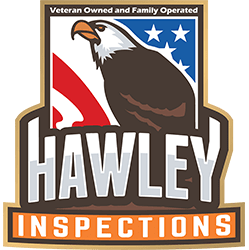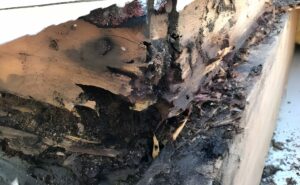
Why have a roof inspection – June 5, 2020
Why should I have a roof inspection?
A roof inspection may be the most essential part of a home inspection. Most of us take for granted that our roof will protect our home and everyone in it. We don’t give it much thought until there’s a leak. By then, you might be facing serious and expensive issues, including structural damage, saturated insulation, ruined family treasures, and even mold.
The life expectancy of a home’s roof is 15-30 years, depending on the roof type, materials used, climate, and other factors. Small amounts of damage from wind or hail can build up over time, compromising the roof’s integrity. Inadequate maintenance and poor drainage can allow moisture infiltration and accelerate deterioration, drastically shortening the roof’s life.
A proper home inspection includes a complete roof inspection by a certified roof inspector who has the trained eye necessary to pinpoint areas of weakness, leaks, and other issues that compromise your roof’s integrity. It’s an inexpensive, visual examination that provides valuable information to protect your investment and help avoid expensive repairs later.
The roof inspection is your home’s first line of defense against the elements.
All other systems in the home rely on the efficacy of the roof system to protect them. If the roof fails, it puts all the other systems in the home at risk, along with your personal belongings and family treasures. That’s why roof age and condition are the first things most insurance companies and mortgage lenders ask us about the home.
A certified roof inspector will visually assess the whole roof system from outside and inside the home when conducting the roof inspection. A roof inspection requires a thorough understanding of the various types of roofs, the components that comprise the roof system, how each function, and how they relate to each other. They must also be able to spot deficiencies in the roof system and explain them in clear and concise language, so that home buyers and their agents know what the issues are. It’s a critical part of the home inspection.
Some of the critical elements a certified roof inspection will include during a roof inspection include:
- Type and pitch of the roof
- Presence and condition of ventilation systems
- Type and state of covering (shingles, tiles, rubber, metal, etc.)
- Type and condition of flashing around skylights, chimneys, parapets, etc.
- Condition of vent pipes and boots
- State of the chimney exterior
- Structure of roof support system (inside and outside)
- Signs of moisture intrusion and more
Roof styles generally include angled or pitched roofs, as well as flat roofs. Each type has its unique strengths and weaknesses. Other structures like eaves, soffits, abutments, valleys, hips, rakes, parapets, and ridges can affect how a roof performs. A thorough understanding of how each element works as part of the roofing system is essential to find any weaknesses.
A roof can be covered in a variety of materials. Besides traditional composite or asphalt shingles, other popular covering materials include slate shingles, wood shakes, tile, rubber rolled roofing materials, metal, and even thatching. Knowing the differences between them, the strengths and weaknesses, appropriate applications, and typical wear issues for each type is essential to determining the roof’s condition.
The weather has a direct impact on your roof.
Proper maintenance is required for it to do its job of shielding your family and your belongings from the elements. Weather can cause minor problems to aspects of your roof. If neglected, these can quickly turn into enormous problems later. When buying a new home, you have no way to know whether the previous owners performed routine roof maintenance roof inspections or if they left it up to chance.
 Your certified roof inspector knows what to inspect. The roof inspection will start with a visual observation of the exterior roof condition. The inspector will look for issues like loose, curled, or missing shingles; raised nail heads; signs of pitting, blistering, or hail damage; appropriate flashing and caulking around vent pipes, skylights, chimneys, etc.
Your certified roof inspector knows what to inspect. The roof inspection will start with a visual observation of the exterior roof condition. The inspector will look for issues like loose, curled, or missing shingles; raised nail heads; signs of pitting, blistering, or hail damage; appropriate flashing and caulking around vent pipes, skylights, chimneys, etc.The inspector will walk on the roof where possible. Once on the roof, the inspector will check for soft spots indicating structural issues or rotten decking (often from current or prior water intrusion). Very steep roofs, icy roofs, and those with metal roof coverings are not accessible for safety and structural reasons. In those cases, a camera inspection of the roof will be performed using special equipment that allows the roof inspector to closely look at the roof elements without actually getting onto the roof.
If accessible, the inspector will enter the attic space and check the underside of the roof structure. They’ll note signs of current or prior water intrusion, whether roof ventilation is appropriate, as well as inadequate or damaged support beams and trusses.
Ventilation isn’t something most of us think about when it comes to our roof inspection.
It seems counterintuitive that we would want air to move in and out of the attic area. But proper ventilation keeps warm air from building up in your attic. Warm air in the winter can cause Ice dams in the attic. This warm air buildup can lead to damaged roof shingles and tiles. And can cause water intrusion into the home. In summer, without an escape route, the heat that builds up can damage your shingles from the inside out and make your air conditioning unit work a lot harder to keep the home cool. An evenly vented roof will allow the hot air to escape, keeping your roof and attic cooler.
Attic vents are the mushroom-shaped circulating fans on your roof and the openings you see on the side of your house near your roofline. These vents need to be clear to function correctly. They can become blocked by leaves, bird’s nests, and even attic insulation. A certified roof inspector is very familiar with the various types of roof ventilation and can assess the appropriateness and functionality of the ventilation in your new home.
Organic matter can wreak havoc on your roof.
Another issue your certified roof inspector will look for is the existence of moss, algae, and lichen (a type of fungus that grows with algae) on your roof structures. Lichens grow slowly, but they can penetrate deep into shingles and feed off their organic oil base. Foreign bodies growing on your roof are often signs of another problem, including moisture buildup, issues with ice damming during winter, and a history of poor maintenance. It is essential to remove lichen, moss, and algae from your roof to prevent damage and prolong your shingles’ lifespan.
Moisture intrusion is a critical issue when it comes to roofs.
Your certified roof inspector will look for signs of water intrusion both inside and outside the home. A lot of roofing issues can lead to water intrusion. Some common problems include worn roofing materials, curled or missing shingles, roofing nails that have backed out of the roof—leaving holes, damaged or poorly installed ridge vents, and flashing, among other things.
Flashing is the thin layer of metal used where other structures like chimneys and parapets penetrate the roof. Flashing is used to shunt water away from the joint so it doesn’t get under the roof covering or inside the home. Another place where flashing is used is where different sections of the roof come together. Multiple rooflines mean there will be several places where the roof lines intersect. Where they intersect, they are covered with flashing. Over time (or if it was not correctly installed), the flashing can loosen up and allow water to seep in where the two sections of roofing meet.
Few characteristics are as essential to roof performance as roof slope and drainage. Water standing on a roof increases the likelihood of leaks and moisture infiltration many-fold. Poor drainage also accelerates the deterioration of roofing materials, leading to a shorter life of the entire roof assembly. In winter, water buildup combined with poor ventilation can cause ice dams to form, pushing water under the roof shingles.
Since moisture infiltration is one of the most serious issues a roof can have, a certified roof inspector will check the ceilings inside the home, as well as the joint where the wall meets the roof, looking for signs of past or present moisture. Any discoloration warrants a check with a moisture meter and should be noted in your home inspection report.
Despite your inspector’s best efforts, it is still possible for a roof to leak in places where there are no visible defects or signs of a current leak at the time of the inspection. Sometimes this is because an issue is seasonal, and your inspection did not take place during the time of year when the problem occurs. Sometimes an issue was repaired inadequately and concealed by fresh paint or other coverings, hiding the defect. An inadequate repair covered this way may allow a prior leak to redevelop over time.
Although such attempts to hide known issues are unethical, some people will still try it. A certified roof inspector’s training gives them the skills needed to spot shoddy workmanship and cosmetic cover-ups most of the time. A professional roof inspection by a certified roof inspector is not a warranty against future problems. However, it is still your best bet to assess the roof’s condition and head off most major issues. Protect your investment. Insist on a home inspector who is a certified roof inspector.
Here is a short video on roof problems
For more information on our Warranties
Warranty
Check us out at the Better Business Bureau




